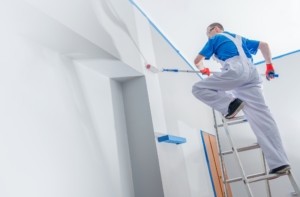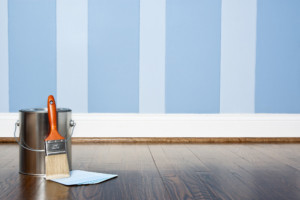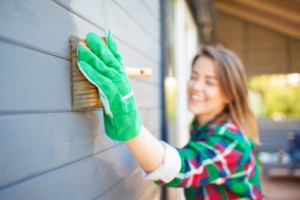Do you know how to answer these painting questions? Find out if you understand these nine essentials today and how to apply them to your home remodel
With the coronavirus pandemic keeping people largely confined to their homes, many decided it’s the perfect time to do home renovations, like painting the interior or exterior. A simple paint job can brighten up a room or make your home appear more modern from an outside view.
Painting can seem like a challenging task if you’re new to it. Would you like to know more about how to begin the process of painting your home? Here are some of the most common painting questions to consider before you pick up a brush or roller.
1. What Type of Paint to Use
Before you go paint shopping, you need to know what type of surface you’re painting, as well as the desired effect. For painting indoors, you will need to choose a paint that has more resins, which can be cleaned and maintained easily.
The two main types of paints are oil-based and water-based, both of which have pros and cons. Oil-based paints tend to have more sheen, which will fade more quickly. Water-based paints have a duller sheen that is also longer-lasting, which you can take into consideration when choosing your paint.
2. How to Pick a Paint Color
One of the most challenging aspects of repainting is picking out a new paint color. If you want to stick with a neutral shade or something similar to what you had before, then you can simply find a color that fits your needs.
However, you can also use a new paint job as a way to completely change up the look and feel of your space. Find a shade that will go well with the furniture you already have. For indoor spaces, you can even paint an accent wall for a huge pop of color.
If you want to paint the outside of your home, you may want to look at current trends for paint colors. You might also need to contact your homeowner’s association if you have one, to get the necessary permits and forms to undertake an outdoor painting project.
3. How Long the Job Will Take
The more space you have to paint, the more time it will take until your painting project is completed. Time yourself to see how long it takes you to complete a certain portion, and then multiply it by the amount of space you need to paint. You should also factor in dry times for multiple coats.
If you have had a paint job done professionally before, add a significant amount of time to your original estimate. Commercial painting contractors have extensive training and can get the job done in record time, so if you’re new at painting, expect to take much longer.
4. The Number of Coats You Will Need
Usually, for any project, you will need at least two coats of paint, or more if you are going from a darker to a lighter color. Paint a primer coat first to try and cover up the darker hue and give the lighter one a base to really shine.
The second coat of regular paint will also cover up holes or cracks in a wall. It will really seal the old color in and prevent it from coming through.
5. Prep Your Home for Painting
Obviously, when you paint your home, you don’t want to get paint anywhere but the intended spot. Before you even think about opening a paint can, you will need to make sure that other areas and your possessions are safe.
If you are only painting a single room, try to move as much furniture out of it as you can to avoid damaging it. For items that you cannot move, cover them with drop cloths and secure the coverings with tape. You’ll also want to prep baseboards, light switches, and electrical outlets with painter’s tape.
6. Materials to Pick Up
You should put together a shopping list and make sure to pick up everything you need in one trip before you start to paint.
- Paint rollers
- Paintbrushes
- Painter’s tape
- Drop cloths
- Paint sticks
- Coveralls
If you find yourself at the store and you’re not sure what to look for, you can also ask a store associate in the paint department. Often they are experts and know exactly which materials your paint job will require.
7. Weatherproof Paint
If you are painting with exterior paint, such as your entire home, door, or trim, you’ll likely need a sturdier and weatherproof option. These types of paints can withstand rain, wind, and other drastic weather events so that your house will still look good for many years.
For the best result, you should try to clean the exterior of your house as best as possible so the paint has a smooth surface to cling to. If you live somewhere that has a lot of rain, then you should try to buy paint that is resistant to mildew as well.
8. Find Out How Much Paint to Buy
You never want to end up needing more paint after you have already started the paint job. Even if you use a computer-operated system to get your paint color, such as at many hardware stores, there is still a chance that the shade could be off if you go to buy more.
A good rule of thumb to go by when you paint is one gallon for every 350 feet squared. For instance, if you’re only painting a wall, then you might need only one gallon, but you should buy much more to paint multiple rooms. It is better to over-estimate and purchase more paint than being left short.
Get Answers to All Your Painting Questions
With this information, you can feel confident about your next painting project. You will have all of the materials and knowledge needed to make your house look brand new with a professional paint job that you can be proud of.
Want more answers to your painting questions, and to bring your home decor to the next level? Contact us today to get all of the information you will need.







